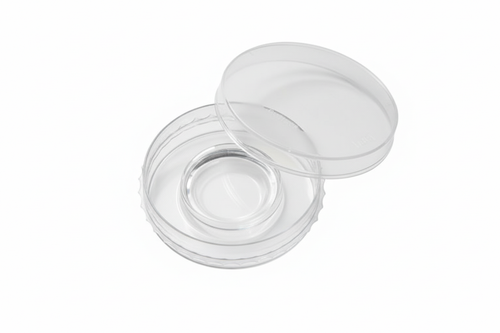Product Description
IVF Culture Dish, 90x20mm
Cat. No. 20302
SPL's IVF (In Vitro Fertilization) Culture Dishes are specifically designed and tested to meet the rigorous demands of assisted reproductive technologies (ART). This large 90x20mm dish is manufactured from high-purity, non-embryotoxic polystyrene and subjected to a strict quality control process, including a Mouse Embryo Assay (MEA), to ensure a safe and supportive environment for gamete and embryo manipulation. The tissue culture (TC) treated surface promotes optimal conditions for fertilization and early embryo development.
Optimized for Assisted Reproductive Technologies
The superior optical clarity and large surface area of these dishes make them ideal for microscopic observation and handling during IVF procedures like oocyte collection and fertilization. Each dish is sterilized to a Sterility Assurance Level (SAL) of 10⁻⁶, ensuring they are free from contaminants that could compromise sensitive IVF workflows. They are widely used for oocyte retrieval, fertilization, and embryo culture in fertility clinics and research laboratories.

- Specifically designed and certified for IVF and ART applications.
- Dimensions: 90 x 20 mm
- MEA (Mouse Embryo Assay) tested to ensure non-embryotoxicity.
- Made from high-purity, optically clear polystyrene (PS).
- Surface is TC-treated for excellent cell culture performance.
- Sterilized to SAL 10⁻⁶ and certified non-pyrogenic and non-cytotoxic.
- Lid design ensures gas exchange while minimizing evaporation.
Cat. No. | Material | Dimensions | ||
| 20302 | Polystyrene (PS) | 90 x 20 mm | ||
Surface Treatment | Sterility | Packaging | ||
| Tissue Culture (TC) Treated | Sterile to SAL 10⁻⁶ | Not specified |
Quality Certified for Embryology |  | |||
| Every batch of SPL IVF products is rigorously tested to ensure the highest standards of quality and safety. The dishes are certified to be non-pyrogenic, non-cytotoxic, and non-embryotoxic, providing peace of mind for embryologists and clinicians. The optically clear surface allows for distortion-free viewing of gametes and embryos under high-magnification microscopy. | ||||
|
| |||
|
| |||










